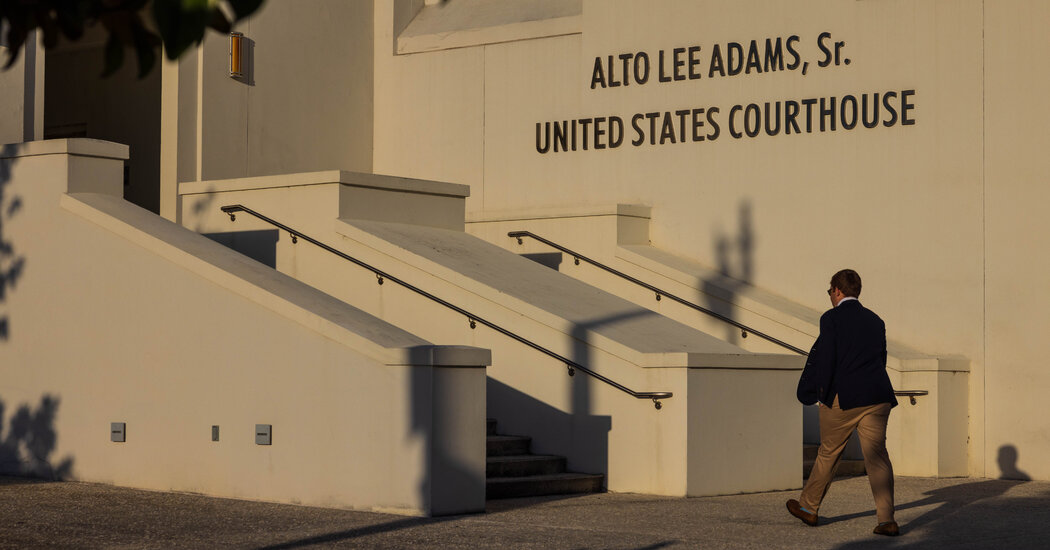The federal judge overseeing former President Donald J. Trump’s classified documents case struck down a small but significant part of the indictment on Monday, ruling that the government must remove from its charges an episode in which Mr. Trump is said to have shown a highly sensitive military map to one of his close aides after he left office.
The decision by the judge, Aileen M. Cannon, was more of a swipe at prosecutors working for the special counsel, Jack Smith, who brought the case against Mr. Trump, than a major blow to the allegations in the case. Even though Judge Cannon technically removed the incident from the charges, prosecutors may still be able to introduce evidence of it to the jury if and when the case finally goes to trial.
The incident that Judge Cannon struck took place in August or September 2021 at a meeting at Mr. Trump’s golf course in Bedminster, N.J. During the meeting, prosecutors say, Mr. Trump showed a classified map related to an ongoing military operation to a representative of his political action committee, widely believed to be Susie Wiles, who is now a top adviser to Mr. Trump’s campaign.
As he displayed the map, prosecutors say, Mr. Trump told Ms. Wiles that the military campaign was not going well.
Lawyers for Mr. Trump had challenged the inclusion of that episode, among others, in the indictment as part of a broader attack on the charges, saying it was extraneous and irrelevant. They argued that it should never have appeared as part of the charges because Mr. Trump has not been formally accused of improperly transmitting classified material to other people, only with illegally retaining it after he left the White House.
In her ruling, Judge Cannon denied the lawyers’ request to dismiss the charges altogether, but noted that prosecutors had elected to charge Mr. Trump in the case with what is known as a “speaking indictment” — one that describes events in evocative language rather than merely listing dry violations of the law.
She said that she agreed with Mr. Trump’s lawyers, who had argued that much of the language in the indictment — including the episode about the map — was “legally unnecessary” and that risks “can flow from a prosecutor’s decision to include in a charging document an extensive narrative account of his or her view of the facts.”
Judge Cannon added that it was “not appropriate” to include the story about the map in the indictment given that one of Mr. Smith’s top deputies had admitted at a hearing last month that it was not directly related to the charges Mr. Trump is facing.
During the hearing, in Federal District Court in Fort Pierce, Fla., the deputy, Jay I. Bratt, told Judge Cannon that prosecutors had included the incident not as charged behavior, but rather as an indication of the former president’s proclivity for recklessly handling classified material.
Mr. Bratt said the evidence was admissible under what is known as Rule 404(b) of the federal criminal procedure, which permits prosecutors to tell the jury about “bad acts” committed by a defendant that are not directly part of the charges in a case.
Judge Cannon seemed skeptical during the hearing about Mr. Bratt’s argument.
“Do you normally include 404(b) in indictments?” she asked.
When Mr. Bratt said he had included similar evidence in other indictments, Judge Cannon shot back, “Is that proper?”















